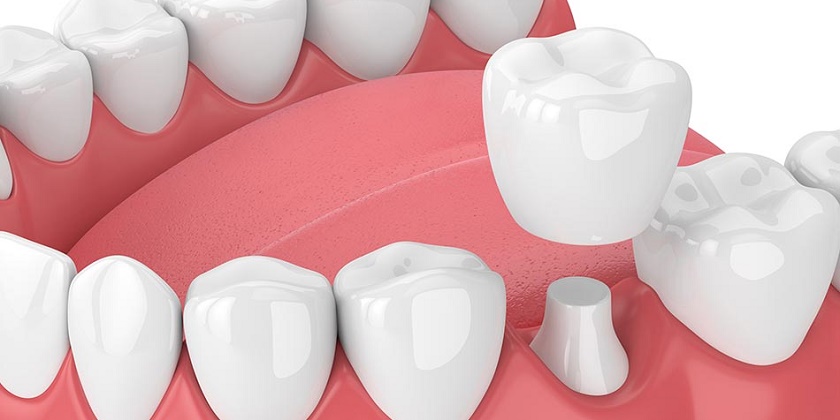- Home
- Dental Crowns

A dental crown is a tooth-shaped "cap" that is placed over a tooth -- to cover the tooth to restore its shape and size, strength, and improve its appearance.
The crowns, when cemented into place, fully encase the entire visible portion of a tooth that lies at and above the gum line.
Why Is a Dental Crown Needed?
A dental crown may be needed in the following situations:
- To protect a weak tooth (for instance, from decay) from breaking or to hold together parts of a cracked tooth.
- To restore an already broken tooth or a tooth that has been severely worn down.
- To cover and support a tooth with a large filling when there isn't a lot of teeth left.
- To hold a dental bridge in place.
- To cover misshaped or severely discolored teeth.
- To cover a dental implant.
- To make a cosmetic modification.
For children, a crown may be used on primary (baby) teeth in order to:
- Save a tooth that has been so damaged by decay that it can't support a filling..
- Protect the teeth of a child at high risk for tooth decay, especially when a child has difficulty keeping up with daily oral hygiene..
- Decrease the frequency of general anesthesia for children unable because of age, behavior, or medical history to fully cooperate with the requirements of proper dental care..
- To hold a dental bridge in place.
- To cover misshaped or severely discolored teeth.
- To cover a dental implant.
- To make a cosmetic modification.
In such cases, a pediatric dentist is likely to recommend a stainless steel crown.
What Types of Crowns Are Available?
Permanent crowns can be made from stainless steel, all metal (such as gold or another alloy), porcelain-fused-to-metal, all resin, or all ceramic.
- Stainless steel crowns are prefabricated crowns that are used on permanent teeth primarily as a temporary measure. The crown protects the tooth or filling while a permanent crown is made from another material. For children, a stainless steel crown is commonly used to fit over a primary tooth that's been prepared to fix it. The crown covers the entire tooth and protects it from further decay. When the primary tooth comes out to make room for the permanent tooth, the crown comes out naturally with it. In general, stainless steel crowns are used for children's teeth because they don't require multiple dental visits to put in place and so are more cost-effective than custom-made crowns and prophylactic dental care needed to protect a tooth without a crown.
- Metals used in crowns include alloys that have a high content of gold or platinum, or base-metal alloys (for example, cobalt- chromium and nickel-chromium alloys). Metal crowns withstand biting and chewing forces well and probably last the longest in terms of wear down. Also, metal crowns rarely chip or break. The metallic color is the main drawback. Metal crowns are a good choice for out-of-sight molars.
- Porcelain-fused-to-metal dental crowns can be color matched to your adjacent teeth (unlike the metallic crowns). However, more wearing to the opposing teeth occurs with this crown type compared with metal or resin crowns. The crown's porcelain portion can also chip or break off. Next to all-ceramic crowns, porcelain-fused-to-metal crowns look most like normal teeth. However, sometimes the metal underlying the crown's porcelain can show through as a dark line, especially at the gum line and even more so if your gums recede. These crowns can be a good choice for front or back teeth as well as long bridges where the metal is needed for strength.
- All-resin dental crowns are less expensive than other crown types. However, they wear down over time and are more prone to fractures than porcelain-fused-to-metal crowns.
- All-ceramic or all-porcelain dental crowns provide better natural color match than any other crown type and may be more suitable for people with metal allergies. All-ceramic crowns can be used for front and back teeth.
- Temporary versus permanent. Temporary crowns can be made in your dentist's office, whereas most permanent crowns are made in a dental laboratory. Typically, temporary crowns are made of an acrylic-based material or stainless steel and can be used as a temporary restoration until a permanent crown is constructed by a lab.

